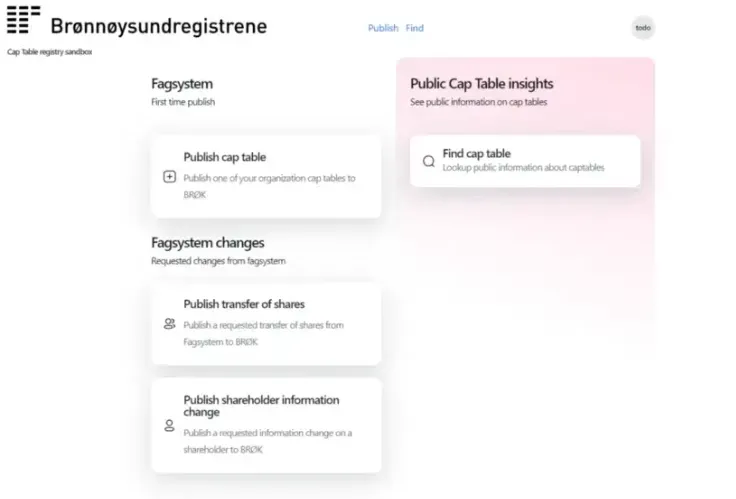The Norwegian government has announced the development of BRØK, a cap table platform for non-listed companies on the public Ethereum network.
With BRØK, you can easily share and update your company's shareholder information using blockchain technology, making the process faster, more efficient and more secure.
This platform, natively on the Arbitrum layer 2 scalability solution, will use the ERC1400 standard to represent shares and the Ceramic network to comply with the EU GDPR privacy regulation.
BRØK enters testing phase - demo and SDK now available
This platform was announced in 2022, but now we are excited to see it enter the next testing phase and see documentation. This is a significant step forward for Ethereum, and we can't wait to see what the future holds for this innovative technology.
Currently, around 380,000 private companies in Norway maintain their own shareholder registers, known as cap tables. This information is considered public and must be made available to anyone who requests it. However, there must currently be an easy way to share this information digitally.
Earlier today the Norwegian government announced they're using Arbitrum to release a cap tables platform for unlisted companies.
- Arbitrum (💙,🧡) (@arbitrum) June 24, 2022
We're very excited to see that Arbitrum is enabling the world to leverage the security of Ethereum! 🌏 https://t.co/WBA3nlzzUt
Arbitrum tweet
BRØK: a single, reliable source of truth for shareholder data
But BRØK is not only about sharing information - it is also about establishing a single, reliable source of truth that different systems can rely on. By combining data from three sources - the blockchain, an open database and specialised systems - BRØK will create a unique ecosystem of interconnected shareholder records.
The platform allows for the publication of:
- share transfer
- share mortgages
- shareholder information
- deletion of shareholder information (GDPR)
- changes in the number of shares from corporate actions such as capital changes, splits and merges.

In BRØK, each company has its own tab on the blockchain, completely separate from other companies.
This tab includes information on the number of shares in different share classes, with an anonymised address pointing to the owner. The blockchain also contains the rules or business logic.
These rules describe who can publish and modify ownership information. In the sandbox version of BRØK, only specialised systems can write to the blockchain. Whenever there is a change in the published information, this is recorded with a timestamp and the corresponding signature of the specialised system that made the change.
In the infrastructure model, the information on the blockchain is marked in red and the anonymous pointer in purple.
It is not possible to delete revision trails on a blockchain. In practice, information is replicated by hundreds or thousands of nodes that together make up the network. BRØK does not store personally identifiable information on the blockchain but in an open distributed database structure (Ceramic), where it is possible to correct or delete data.
Using the composability of BRØK, it will be possible to build interconnected services based on the solution in the future. How BRØK will develop is essentially decided by the systems and the users.








